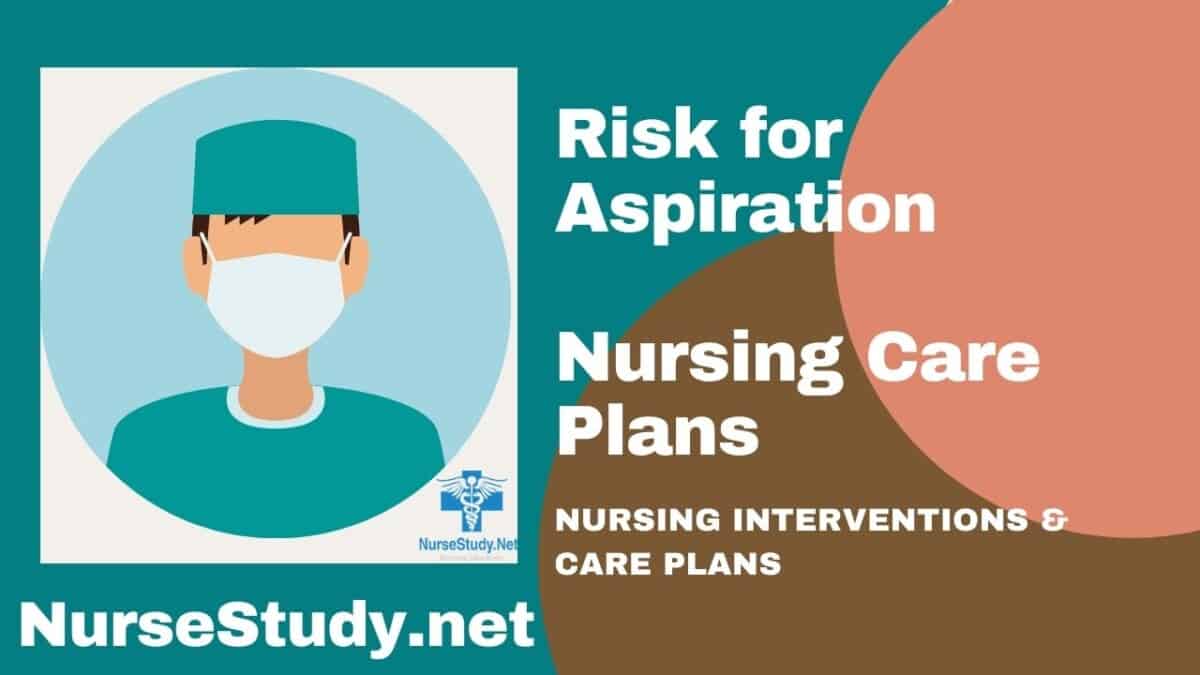Risk for aspiration is a critical nursing diagnosis that requires careful assessment and intervention. This comprehensive guide covers everything nurses need to know about identifying, preventing, and managing patient aspiration risk.
Understanding Aspiration Risk
Aspiration occurs when foreign substances enter the airway and lungs instead of following the normal path to the stomach. During normal swallowing, the epiglottis acts as a protective barrier, closing over the trachea to prevent aspiration. When this mechanism fails, patients can aspirate food, fluids, or stomach contents, potentially leading to serious complications, including aspiration pneumonia.
Key Risk Factors
Common risk factors for aspiration include:
- Presence of artificial airways (tracheostomy/endotracheal tubes)
- Enteral feeding tubes
- Altered consciousness
- Weakened gag/cough reflexes
- Dysphagia (difficulty swallowing)
- Neurological conditions affecting swallowing
- Head/neck trauma or surgery
- Poor positioning
- Gastrointestinal disorders (GERD, hiatal hernia)
Comprehensive Nursing Assessment
Physical Assessment
- Evaluate swallowing capacity and gag reflex
- Assess the level of consciousness
- Monitor respiratory status
- Check for oral/facial muscle strength
- Evaluate positioning ability
Diagnostic Indicators
- Auscultate lung sounds
- Monitor oxygen saturation
- Assess nutritional status
- Review medication administration routes
- Evaluate tube placement if present
Evidence-Based Nursing Interventions
Primary Prevention
- Position patient at 30-45 degrees during/after feeding
- Maintain proper tube placement
- Verify feeding tube placement before each use
- Provide oral care before/after meals
Monitoring and Management
- Keep suction equipment readily available
- Monitor residual volumes with tube feeds
- Assess swallowing before oral intake
- Implement thickened liquids as ordered
Patient Education
- Teach proper positioning during meals
- Demonstrate safe swallowing techniques
- Explain aspiration risk factors
- Review dietary modifications
Nursing Care Plans
Care Plan 1
Nursing Diagnosis Statement:
Risk for Aspiration related to the presence of nasogastric tube feeding
Related Factors:
- Continuous enteral feeding
- Supine positioning
- Delayed gastric emptying
Nursing Interventions and Rationales:
Check tube placement before each feeding
- Rationale: Prevents accidental administration into airways
Monitor residual volumes q4h
- Rationale: High residuals increase aspiration risk
Maintain HOB elevation at 30-45 degrees
- Rationale: Reduces reflux risk through gravity
Provide oral care q4h
- Rationale: Reduces bacterial colonization
Desired Outcomes:
- The patient will remain free from aspiration
- The patient will maintain clear lung sounds
- Oxygen saturation will remain >95%
Care Plan 2
Nursing Diagnosis Statement:
Risk for Aspiration related to decreased level of consciousness
Related Factors:
- Sedation
- Neurological impairment
- Poor airway protection
Nursing Interventions and Rationales:
Assess LOC every 2 hours
- Rationale: Early detection of mental status changes
Suction as needed
- Rationale: Prevents secretion accumulation
Position in a side-lying position
- Rationale: Promotes drainage of secretions
Monitor respiratory status
- Rationale: Enables early intervention
Desired Outcomes:
- The patient will maintain a patent airway
- The patient will demonstrate adequate oxygenation
- No signs of aspiration will be present
Care Plan 3
Nursing Diagnosis Statement:
Risk for Aspiration related to dysphagia post-stroke
Related Factors:
- Impaired swallowing mechanism
- Facial muscle weakness
- Delayed swallow reflex
Nursing Interventions and Rationales:
Perform bedside swallow evaluation
- Rationale: Determines safe swallowing capacity
Implement thickened liquids
- Rationale: Easier to control during swallowing
Coordinate with speech therapy
- Rationale: Provides specialized swallowing assessment
Monitor meal consumption
- Rationale: Ensures safe feeding techniques
Desired Outcomes:
- The patient will demonstrate safe swallowing
- The patient will maintain adequate nutrition
- No episodes of aspiration will occur
Care Plan 4
Nursing Diagnosis Statement:
Risk for Aspiration related to the presence of tracheostomy
Related Factors:
- Artificial airway
- Impaired glottic closure
- Increased secretions
Nursing Interventions and Rationales:
Monitor cuff pressure q4h
- Rationale: Ensures proper seal
Suction before meals
- Rationale: Clears secretions
Verify cuff inflation during feeds
- Rationale: Prevents aspiration around the tube
Provide trach care q8h
- Rationale: Maintains airway patency
Desired Outcomes:
- The patient will maintain a clear airway
- No signs of aspiration will be present
- Proper cuff pressure will be maintained
Care Plan 5
Nursing Diagnosis Statement:
Risk for Aspiration related to GERD
Related Factors:
- Delayed gastric emptying
- Lower esophageal sphincter incompetence
- Increased abdominal pressure
Nursing Interventions and Rationales:
Administer antacids as ordered
- Rationale: Reduces gastric acid
Position upright after meals
- Rationale: Minimizes reflux
Schedule meals 2-3 hours before bedtime
- Rationale: Allows gastric emptying
Monitor for reflux symptoms
- Rationale: Enables early intervention
Desired Outcomes:
- The patient will remain free from aspiration
- The patient will demonstrate reduced reflux symptoms
- The patient will maintain adequate nutrition
References
- Ackley, B. J., Ladwig, G. B., Makic, M. B., Martinez-Kratz, M. R., & Zanotti, M. (2023). Nursing diagnoses handbook: An evidence-based guide to planning care. St. Louis, MO: Elsevier.
- Ebihara T. Comprehensive Approaches to Aspiration Pneumonia and Dysphagia in the Elderly on the Disease Time-Axis. J Clin Med. 2022 Sep 10;11(18):5323. doi: 10.3390/jcm11185323. PMID: 36142971; PMCID: PMC9504394.
- Harding, M. M., Kwong, J., & Hagler, D. (2022). Lewis’s Medical-Surgical Nursing: Assessment and Management of Clinical Problems, Single Volume. Elsevier.
- Herdman, T. H., Kamitsuru, S., & Lopes, C. (2024). NANDA International Nursing Diagnoses – Definitions and Classification, 2024-2026.
- Ignatavicius, D. D., Rebar, C., & Heimgartner, N. M. (2023). Medical-Surgical Nursing: Concepts for Clinical Judgment and Collaborative Care. Elsevier.
- Kollmeier BR, Keenaghan M, Doerr C. Aspiration Risk (Nursing) [Updated 2023 Mar 16]. In: StatPearls [Internet]. Treasure Island (FL): StatPearls Publishing; 2024 Jan-. Available from: https://www.ncbi.nlm.nih.gov/books/NBK568750/
- Sanivarapu RR, Vaqar S, Gibson J. Aspiration Pneumonia. [Updated 2024 Mar 20]. In: StatPearls [Internet]. Treasure Island (FL): StatPearls Publishing; 2024 Jan-. Available from: https://www.ncbi.nlm.nih.gov/books/NBK470459/
- Silvestri, L. A. (2023). Saunders comprehensive review for the NCLEX-RN examination. St. Louis, MO: Elsevier.
